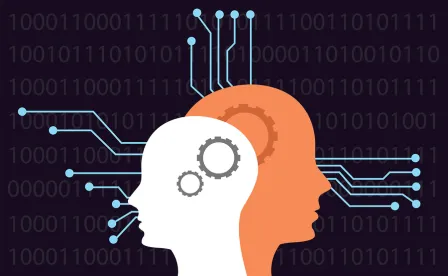This article is the third in a five-part series. Each of these articles relates to the state of machine-learning patentability in the United States during 2019. Each of these articles describe one case in which the PTAB reversed an Examiner’s Section 101 rejection of a machine-learning-based patent application’s claims. The first article of this series described the USPTO’s 2019 Revised Patent Subject Matter Eligibility Guidance (2019 PEG), which was issued on January 7, 2019. The 2019 PEG changed the analysis provided by Examiners in rejecting patents under Section 101[1] of the patent laws, and by the PTAB in reviewing appeals from theses Examiner rejections. The second article of this series includes methods for overcoming rejections based on the “mental processes” category of abstract ideas, on an application for a “probabilistic programming compiler” that performs the seemingly 101-vulnerable function of “generat[ing] data-parallel inference code.” This article describes another case where the PTAB applied the 2019 PEG to a machine-learning-based patent and concluded that the Examiner was wrong.
Case 3: Appeal 2018-004925[2] (Decided June 7, 2019)
This case involves the PTAB reversing the Examiner’s Section 101 rejections of claims of the 14/080,578 patent application. The PTAB explained that this application relates to a
customer relationship management (CRM) system using machine learning and statistical models for dynamically generating a customer’s preferences (interests, look and feel, purchase habits) when a computed value corresponding to the customer’s predicted intent exceeds a predetermined threshold confirming that the customer is likely to respond to the survey.
The Examiner argued that the claims are abstract ideas under the “organizing human activity” and “mental processes” categories. The PTAB agreed with the Examiner that the claims recite theses abstract ideas. The PTAB explained that the claims involved assessing transactions between consumers and merchants, which it found to be a fundamental economic principle (one example of a “method of organizing human activity”).
Then, the PTAB proceeded to determine that the claims are not directed to the abstract idea (i.e., the abstract idea is integrated into a practical application). The PTAB discussed the “need,” described in the specification, for the improvements disclosed by the patent. The PTAB then stated that the “computer-related limitations of independent claim 6 . . . capture the improvement discussed in the Specification.” Further, the PTAB stated:
In particular, the claim recitation of a computer’s utilization of a machine learning or statistical model to analyze . . . [and] to tailor a survey . . . integrates the judicial exception into a practical application. While statistical modeling can be performed with pen and paper, we agree with Appellants that [the claimed process] is an improvement over the prior art. As such, . . . the claim . . . is directed to a technological improvement.
The PTAB’s expression that the claim is “an improvement over the prior art” and “directed to a technical improvement” is in line with the first example provided in the 2019 PEG for Step 2A Prong 2: “an additional element reflects an improvement in the functioning of a computer, or an improvement to other technology or technical field.” Additionally, this reasoning could also have applied to the “inventive concept” requirement of Step 2B.
Conclusion
This case illustrates:
(1) the method of using customer preferences to predict a customer’s likelihood of responding to a survey was held to not be an abstract idea, in this context, even though the claims “recite” an abstract idea;
(2) the PTAB may find that the claims integrate an abstract idea into a practical application where the “needs” or “improvements” described in the specification are solved or addressed by the claim; and
(3) the PTAB may find that an additional element in the claim that provides an improvement in the art (or technical field) of the invention may satisfy Step 2A Prong 2, and make the claim subject-matter eligible.
The next two articles will build on this background, and will provide additional examples of how the PTAB approaches reversing Examiner 101-rejections of machine-learning patents under the 2019 PEG. Stay tuned for the analysis and lessons of the next case, which includes an explanation of how a number of arguments made by an Applicant might be fit into the 2019-PEG structure, including an argument that the Examiner has “over-generalized the claim in characterizing it.”
FOOTNOTES
[1] 35 U.S.C. § 101.
[2] https://e-foia.uspto.gov/Foia/RetrievePdf?system=BPAI&flNm=fd2018004925-06-07-2019-1.




 />i
/>i

